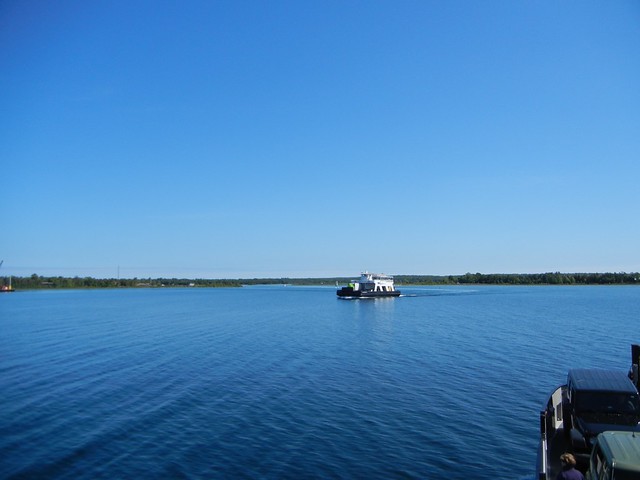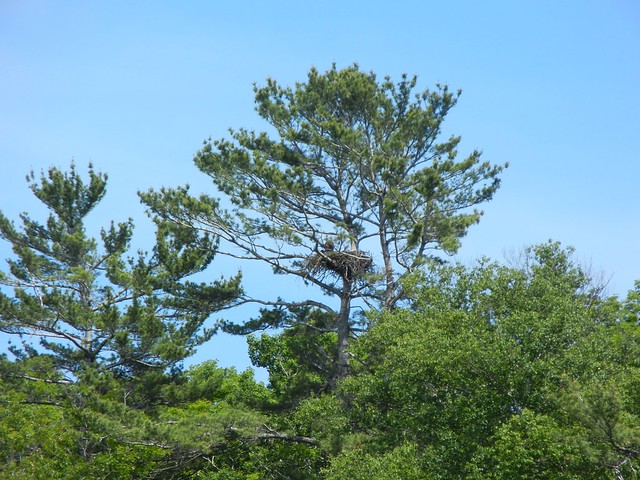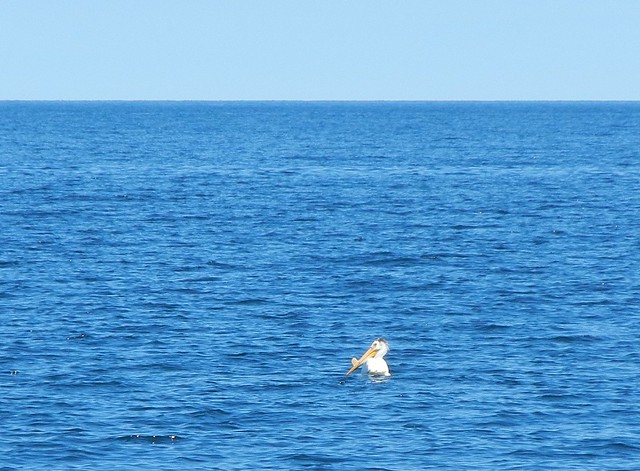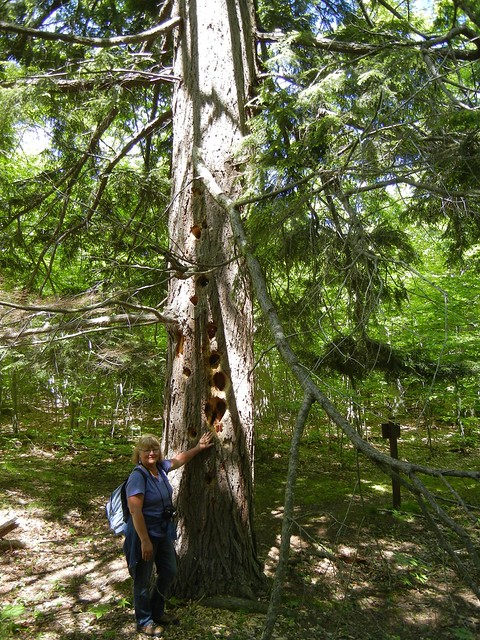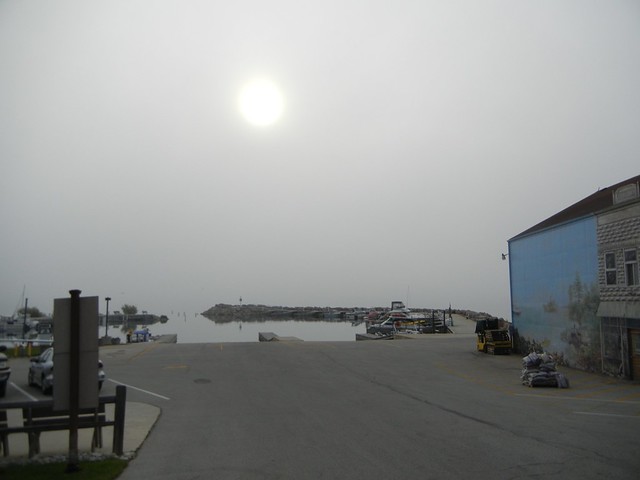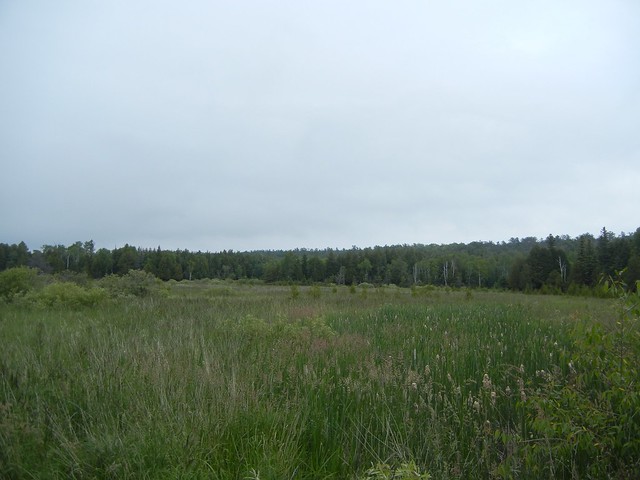Sometimes you hold all the stars in your hand. Sometimes the cards are aligned just right. And sometimes you get to be in Door County, Wisconsin, on the most heartbreakingly beautiful day of the summer.
Better yet, I got to spend most of the day on Washington and Rock Islands, just off the northern tip of the long peninsula, birding. Melody showed me some really lovely spots and some really exciting birds, and my appetite is decidedly whetted for another visit.
It seems like every would-be birding destination in the world touts its “diversity of habitats,” but Door County lives up to the boast. What’s more, those habitats — from hay fields and woodlots to boggy spruce forests and hemlock groves — unite the two great ecological systems that dominate the center of the continent. Here, the dickcissels of the midwestern prairies sing to the black-throated green warblers of the boreal forest.
The meeting of north and west is especially obvious out on the water. Not that long ago, American white pelicans were rare birds on the Great Lakes, even in migration. This week, it has been hard not to see these huge, magnificent birds, ones and twos sailing majestically on the waters of the bay and the lake or larger groups — up to 130 at a time — gliding and sailing with equal serenity across the blue skies.
These classic birds of western prairie lakes and swales share the blue waters with surprising numbers of red-breasted mergansers.
Most seem to be males, suggesting that the waters of Door County are a “molt migration” site for this species; while the females and young linger around the nest, the drakes, their work done for the year, take off for open water and shed their flight feathers in safety. Nearly every bit of shoreline — as here, on Washington Island — seems to have its mergansers, but the biggest flock Melody and I encountered was a whopping 310 birds, loafing and feeding just off Rock Island.
The wooded habitats, too, harbor a piquant mix of species. This enormous hemlock is the playground of a pileated woodpecker, a surprisingly common bird in Door County; in fact, with the exception of the ubiquitous northern flickers, I heard and saw more pileateds than any other picid this week.
Just a couple of miles away stands a dark, wet deciduous forest, the home of a family of red-headed woodpeckers. Quiet and furtive on a warm afternoon, the birds eluded us on our quick stop, but just knowing they were there, somewhere, made the peninsula a richer place to my mind and eye.
As a slender hint of just how rich Door County is for the birder, have a look at our day list, and note the enticing mix of northern and western and eastern birds you can find there — even in summer.
Canada goose
Mute swan
Mallard
Hooded merganser
Red-breasted merganser
Wild turkey
Common loon
American white pelican
Double-crested cormorant
Great blue heron
Great egret
Black-crowned night-heron
Turkey vulture
Osprey
Bald eagle
Cooper’s hawk
Broad-winged hawk
Red-tailed hawk
Sandhill crane
Killdeer
Ring-billed gull
Herring gull
Caspian tern
Common tern
Rock pigeon
Mourning dove
Chimney swift
Ruby-throated hummingbird
Northern flicker
Pileated woodpecker
Great crested flycatcher
Eastern kingbird
Red-eyed vireo
Blue jay
American crow
Common raven
Purple martin
Tree swallow
Northern rough-winged swallow
Bank swallow
Cliff swallow
Barn swallow
Black-capped chickadee
Red-breasted nuthatch
House wren
Blue-gray gnatcatcher
Eastern bluebird
American robin
European starling
Cedar waxwing
Nashville warbler
Yellow warbler
Chestnut-sided warbler
Black-throated green warbler
American redstart
Ovenbird
Common yellowthroat
Eastern towhee
Chipping sparrow
Clay-colored sparrow
Vesper sparrow
Savannah sparrow
Song sparrow
Northern cardinal
Indigo bunting
Dickcissel
Bobolink
Red-winged blackbird
Eastern meadowlark
Common grackle
Brown-headed cowbird
Purple finch
American goldfinch
House sparrow


